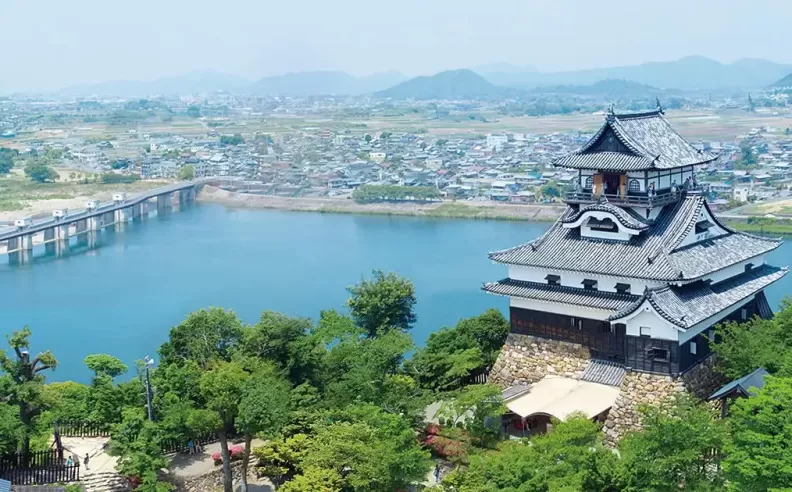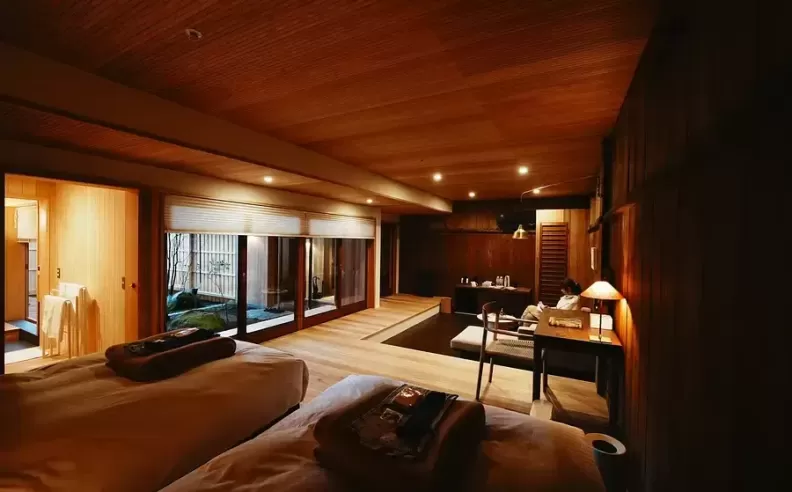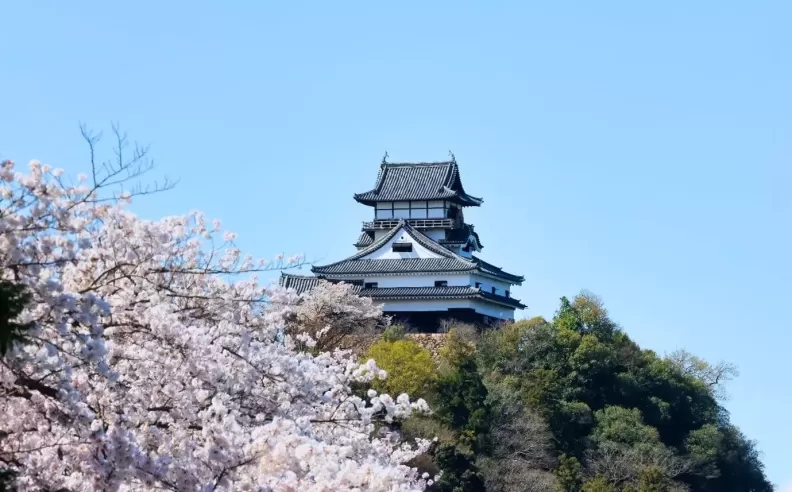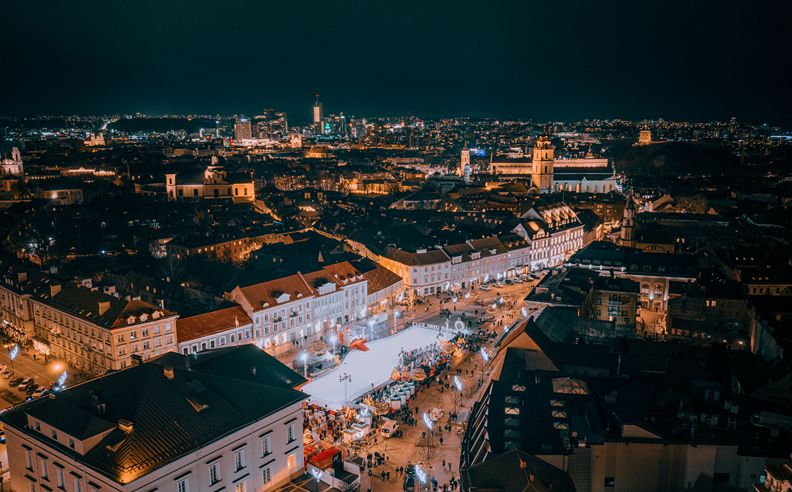
In springtime, travellers and local residents flock to Japan’s sakura hotspots in search of the perfect cherry blossom. It’s an incredibly special time of year, and something that’s on the bucket lists of many travellers around the world. But stick to the most popular areas and it can also be extremely busy, and you’re likely to find yourself sharing those idyllic views with crowds of people. We’ve picked out some of our favourite lesser-visited spots around Japan where you can enjoy a more serene sakura season with fewer people, and just as much beauty.

In Gifu Prefecture’s Usuzumi Park, visit a cherry tree believed to have blossomed for more than a millennium
Imagine the tales a 1,500-year-old tree could tell. In Gifu Prefecture, the hardy Neodani Usuzumi-Zakura cherry tree has been standing tall for what is believed to be at least a millennium and a half. Designated a National Natural Monument and one of Japan’s Three Great Cherry Trees alongside trees in Fukushima and Yamanashi Prefectures, the tree is more than 17 meters tall with a trunk circumference of almost 10 meters. Its sprawling canopy is held up by stilts that support its branches, and while it cuts a solitary figure standing alone, the tree is much loved and visited by tens of thousands of people each year. The tree has withstood centuries of harsh elements – typhoons, heavy snowfall, strong winds – as well as termite damage, yet still stands firm today. Its blossoms are highly anticipated each year, forming billowing clouds of buds that are pink before they burst open, white at their peak, and turning a pale grey before they drop to the ground.

Spectacular sakura alongside an Edo-period castle and an open-air architectural park in Aichi Prefecture
One of only twelve original Japanese castles remaining today, Inuyama Castle is another opportunity to take a step back in time. Perched on a small hill above the Kiso River, it is believed to have the oldest castle tower in the country, once famous as a strategic watchtower and now a National Treasure. Generations of guards have looked out from the tower, and if they had been on duty in spring, would have had views of the spectacular cherry trees in bloom in the grounds. Today’s visitors have a much more leisurely time of sakura-viewing, and while it’s beautiful at any time of year, the castle is particularly special in spring when framed through branches bursting with pale pink blossoms. Head up to the top floor for views over the valley and the treetops before exploring the gardens, home to the Sanko Inari Shrine with its tunnel of red tori gates, particularly photogenic during sakura season.
Timing a visit to coincide with cherry blossom season is never an exact science, but visit the castle in early April and you’ll also be able to experience the Inuyama Festival. Taking place since 1635, the festival features a parade of eight-meter floats illuminated with hundreds of paper lanterns that pass through the town with a backdrop of trees in full bloom. It’s a mesmerizing sight, and the flute and taiko drum music that accompany the parade is even more evocative of times gone by.
Pro tip – while you’re in Inuyama, don’t miss the chance to visit Meiji Mura, a fascinating open-air museum focusing on the architecture of the Meiji period between 1868 and 1912. This period saw a Western influence on traditional Japanese architecture as the country sought to modernize itself. Many buildings from the era were lost due to wartime damage and the drive towards modernization, and the park is the ideal place for architecture lovers to see relics of the past that have been preserved and rebuilt here. Treasures include the Sapporo Telephone Exchange, Kyoto’s dramatic Francis Xavier Cathedral complete with stained glass windows, and the main entrance and lobby of Tokyo’s Imperial Hotel, designed by Frank Lloyd Wright and relocated when the older iteration was demolished to make way for a bigger, newer version.

A handsome castle, beautiful cherry blossom, and an exciting quest in the birthplace of ninjas
Dressed head-to-toe in black and famed for their slick combat, sabotage and espionage skills, ninjas have long been a mysterious and fascinating part of Japanese culture, featuring in movies, computer games and anime. Head to Iga City in Mie Prefecture – the birthplace of ninjas – and you’ll be in the best place to learn more about these evocative warriors from antiquity, and also to try out some ninja skills for yourself. A great place to start is Iga Ueno Castle, originally built more than 400 years ago for a samurai lord who hired ninjas for protection. Today’s castle is a reconstruction, built with the original materials and filled with intriguing displays of weaponry and armor. The castle plays host to a five-week ninja-themed festival each spring that coincides with cherry blossom season. For an even deeper understanding of ninja culture, visit the Iga-Ryu Ninja Museum where you can see inside a ninja house with all of the traps, fake doors and secret escape routes designed to confuse enemies, watch a show of talented performers displaying typical ninjutsu skills, and even dress up as a ninja yourself to practice throwing shuriken iron stars, something that looks deceptively simple but is in fact a tough skill to perfect.
Pro Tip – if you’re looking to challenge work colleagues with something more interesting than the usual kind of team-building activities, Iga City could be the place for you. The Ninja Quest sees participants dress in ninja costumes to complete missions throughout the city, including puzzle-solving, decoding secret messages, and travelling from point to point on a ninja-themed train. It’s a unique way to bring teams together, and one you’re unlikely ever to forget.

A stay immersed in history at Nipponia Iga Ueno Castle Town Hotel
Spread throughout multiple historical properties in the town of Iga, the Nipponia Iga Ueno Castle Town Hotel is one of the most evocative places to stay, and transports guests back to a Japan of times gone by. The hotel differs from traditional accommodations in that it isn’t centered on one building. Instead, it combines traditional wooden houses, repurposed heritage properties and new buildings with well-tended traditional gardens and interior design combining Japanese traditions and contemporary comfort. Stay here and you really feel immersed into the life of the town and all of its rich history. Meals are served in a restored inn with menus focusing on local produce, like firefly quid, Iga beef and spiny lobster. And in the spirit of the Iga’s ninja roots, the Nipponia team offers family-friendly experiences like ninja training and ninja rickshaw rides, guided by hotel staff with roots in the town.

M283 Arabia covers all aspects of men's lifestyle; fashion, sports, self-care, and travel tips and destinations.

